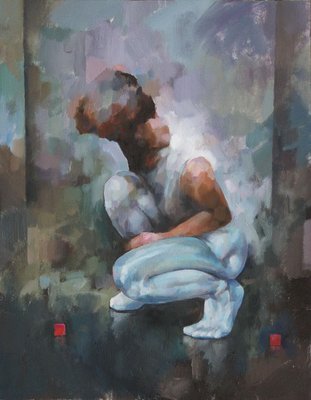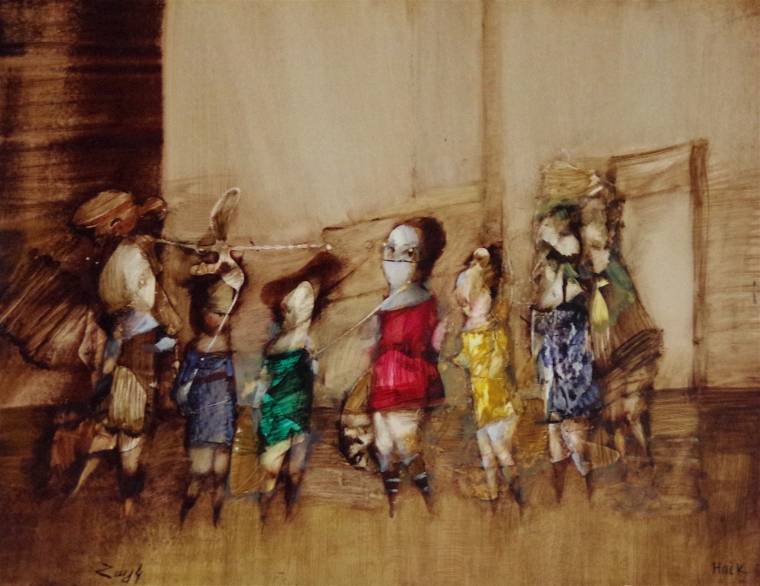Discover the very best Tips for Creating Stunning Figurative Oil Painting Artwork
Discover the very best Tips for Creating Stunning Figurative Oil Painting Artwork
Blog Article
The Development of Metaphorical Oil Painting: Recognizing Its Historical Relevance and Modern Interpretations
The evolution of metaphorical oil paint offers as an engaging lens with which to take a look at the interaction in between artistic expression and historic context. From the careful naturalism of the Renaissance to the emotive power of the Baroque, each age has actually added layers of meaning and strategy to this timeless tool. Contemporary musicians, drawing from this rich heritage, are currently reinterpreting the human figure in ways that challenge standard narratives. As we explore these transformations, one have to think about just how the discussion in between past and existing informs not only creative method but also social reflections in an increasingly intricate globe.
Origins of Metaphorical Oil Painting
The origins of figurative oil paint can be traced back to the early Renaissance in Europe, especially in the 15th century. The development of oil paint allowed for better deepness of shade and detail, boosting the realism and vibrancy of their work.

In this transformative period, figures were often illustrated within contextually rich environments, showcasing not just their physical features yet additionally their psychological states. Pioneers such as Jan van Eyck and Titian harnessed the tool's versatility, utilizing layering methods to achieve luminance and texture. This development assisted in the portrayal of complex fabrics and the nuances of complexion, contributing to the development of portraiture and narrative scenes.
Furthermore, the Renaissance emphasis on humanism fostered an admiration for individualism, which consequently affected artists to develop more vibrant and relatable numbers - figurative oil painting. Consequently, metaphorical oil painting emerged as a powerful vehicle for narration and emotional involvement, preparing for future imaginative activities and styles
Secret Historic Movements
Substantial historic activities have actually shaped the advancement of figurative oil paint, each adding unique approaches and methods that expanded the tool's opportunities. The Renaissance marked a zero hour, highlighting realistic look and the human form, with artists like Leonardo da Vinci and Michelangelo pressing the borders of anatomical accuracy and point of view. Following this, the Baroque age brought dramatic contrasts of light and shadow, exemplified by Caravaggio, who instilled spiritual styles with intense emotionality.
The 19th century presented Romanticism and Realistic look, where artists such as Delacroix and Courbet challenged classic ideals, concentrating on individual expression and daily life. The introduction of Impressionism better changed the tool by highlighting the results of light and shade, bring about a departure from traditional depiction.
In the very early 20th century, motions like Expressionism and Cubism redefined figurative painting via abstraction and the exploration of psychological depth. Each of these motions not only reflected the societal adjustments of their times however also laid the foundation for contemporary analyses. The interplay in between these historic activities has produced a rich tapestry of viewpoints and styles, influencing modern-day musicians in their quest of capturing the human experience on canvas.
Methods and Products Advancement

Throughout the Baroque duration, strategies such as chiaroscuro and sfumato emerged, boosting the emotional vibration of figurative compositions. Musicians began to explore lusters and impasto, controling structure and luminosity. By the 19th century, developments like using pre-mixed paints in tubes reinvented availability, allowing artists to repaint en plein air and record the short lived impacts of light.
The 20th century saw the intro of artificial pigments and mediums, which increased the palette and modified the uniformity of oil paints. Moreover, the exploration of brand-new application methods, such as combination blades and brushes of varying stiffness, additional varied artistic expression. Jointly, these developments reflect view it the developing connection in between materials, methods, and the creative vision inherent in figurative oil paint.

Contemporary Interpretations
Contemporary analyses of metaphorical oil paint show a dynamic discussion in between tradition and development, where musicians test established standards and check out varied motifs. This evolution materializes in various means, as modern artists blend timeless strategies with contemporary principles, often resolving social, political, and individual narratives.
Many practitioners draw ideas from historic works, yet they instill their items with contemporary viewpoints, using the human type as a lorry for commentary on identification, culture, and gender. Artists significantly explore abstraction, distortion, and multimedias, which enables a broader analysis of the figure and its context.
In addition, making use of vivid color schemes and resource unusual structures often offers to interrupt typical seeing experiences, provoking crucial interaction from audiences. This shift in focus prolongs beyond aesthetics; it mirrors a growing awareness of the intricacies of human experience in an interconnected world.
As figurative oil paint continues to advance, it stays a vital medium for discovering the nuances of modern life, embodying both a regard for heritage and a commitment to modern thought. The outcome is an abundant tapestry of expression that reverberates with the intricacies of the modern human condition.
Influence On Modern Art
The effect of metaphorical oil paint on modern art is extensive, as it has actually constantly inspired a myriad of creative movements and practices throughout the 20th and 21st centuries. From Expressionism to Surrealism and past, the exploration of the human figure has actually stayed a main theme, permitting artists to share complicated emotions and stories. This emphasis on metaphorical representation has actually brought about a re-examination of traditional techniques, leading to innovative approaches that blend realistic look with abstraction.
Moreover, contemporary musicians have actually welcomed metaphorical oil paint as a way to attend to political and social problems, making use of the tool to challenge perceptions of society, identification, and gender. The revival of interest in metaphorical operate in recent years reflects a wishing for connection in an increasingly digital globe, where human experience and emotion are vital.
Additionally, the discussion between metaphorical oil paint and modern art is noticeable in the jobs of artists such as Kehinde Wiley and Jenny Saville, that make use of historical references while instilling their items with contemporary importance. Ultimately, metaphorical oil painting remains to form and redefine modern imaginative expression, highlighting its long-lasting value from this source in the art world.
Conclusion
The evolution of metaphorical oil paint highlights its historic significance and flexibility across various creative motions. From the naturalism of the Renaissance to the emotive expressions of the Baroque and the innovative strategies of modernity, this medium has actually constantly changed. Contemporary analyses reflect unconventional structures and lively colors, cultivating essential interaction with political and social styles. Eventually, figurative oil painting remains a crucial medium for discovering the human experience, resonating profoundly in today's electronic landscape.
The evolution of figurative oil paint offers as an engaging lens via which to take a look at the interaction between artistic expression and historic context.Considerable historical activities have actually shaped the development of figurative oil paint, each contributing unique viewpoints and techniques that increased the tool's opportunities.As historic movements shaped the trajectory of figurative oil paint, the materials and strategies utilized by artists have additionally undergone significant changes. figurative oil painting.The impact of figurative oil painting on contemporary art is profound, as it has actually constantly inspired a myriad of artistic motions and techniques throughout the 20th and 21st centuries.The advancement of figurative oil painting underscores its historic significance and flexibility across different imaginative movements
Report this page